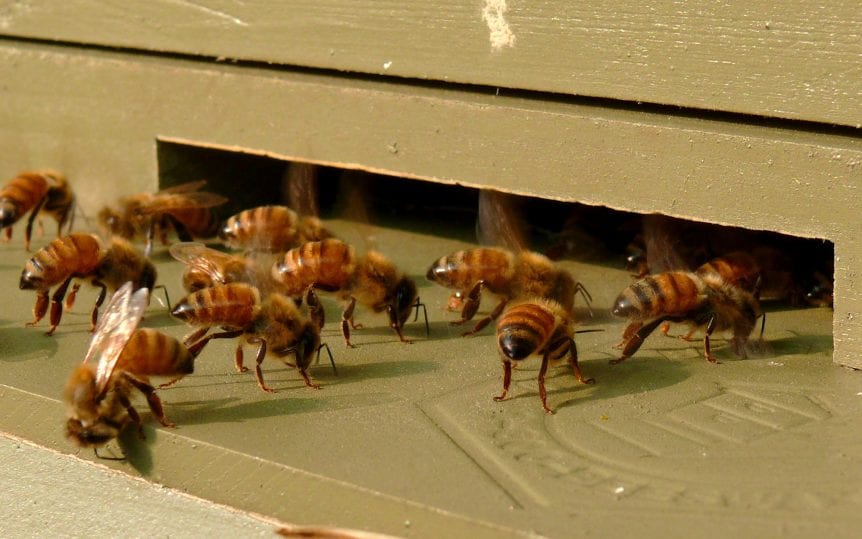The U.S. Department of Agriculture’s (USDA) Agricultural Research Service (ARS) recently held a ribbon-cutting ceremony for a new honeybee research facility at the University of California, Davis. The new facility is part of the Invasive Species and Pollinator Health Research Unit, which is assigned the task of developing approaches to improve bee health in the face of a myriad of stress factors.
“This research lab will be focusing on looking at the ongoing challenges with honeybee populations,” said Dr. Arathi Seshadri, one of the two USDA-ARS research entomologist who will be working in the new lab. “And trying to find solutions to some of the challenges that the beekeepers, queen breeders, and the almond industry and most of the fruit and vegetable industry is facing because of the trouble that bees are having in sustaining their populations.”
The research will be done in collaboration with the work already taking place at the Harry H. Laidlaw Jr. Honey Bee Research Facility which is across the street from the new ARS facility on the UC Davis campus. Some of the research will be looking at several questions related to bee nutrition as well as the role that agricultural materials play in the overall health of honeybee populations.
“Are there some important micronutrients and vitamins and amino acids missing in their diet and can we supplement this?” Seshadri noted. “How can we build a strong bee that can actually live in the face of all the environmental stressors that are out there? So how can we come together on this?”
The research unit will be communicating with industry stakeholders to better understand the concerns to help guide the research work that will be conducted at the facility. The team at the new honeybee research facility will also be periodically presenting research findings in a variety of ways to keep industry members apprised of relevant developments.
“One of the broader goals for this unit is to also bring together all the research and actually test it out in California to see how well it’s actually addressing the needs of the pollination industry and beekeeper concerns,” said Seshadri. “So, there are a few different ways in which we are going to grow this unit.”











